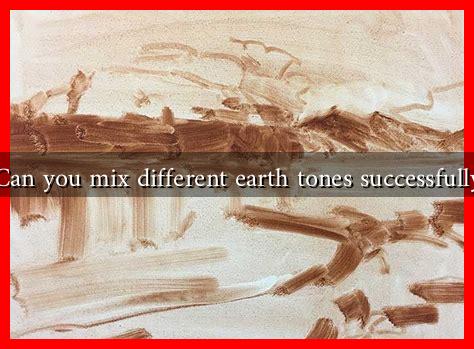-
Table of Contents
Can You Mix Different Earth Tones Successfully?
Earth tones are a palette of colors that evoke the natural world, including shades of brown, green, beige, and rust. These colors are often associated with stability, warmth, and comfort, making them popular choices in interior design, fashion, and art. But can you successfully mix different earth tones? This article explores the principles of color theory, practical tips for mixing these hues, and examples of successful combinations.
The Basics of Earth Tones
Earth tones are derived from natural elements and are typically muted and subdued. They can be categorized into several groups:
- Warm Earth Tones: These include shades like terracotta, ochre, and warm browns.
- Cool Earth Tones: These consist of colors like sage green, slate gray, and cool taupe.
- Neutral Earth Tones: These are versatile shades such as beige, cream, and soft whites.
Understanding these categories is crucial for mixing earth tones effectively. The key is to balance warm and cool tones to create a harmonious look.
Color Theory and Mixing Earth Tones
Color theory provides a framework for understanding how colors interact. When mixing earth tones, consider the following principles:
- Complementary Colors: Colors opposite each other on the color wheel can create striking contrasts. For example, pairing a warm terracotta with a cool sage green can add depth to a design.
- Analogous Colors: Colors next to each other on the color wheel create a more subtle and cohesive look. For instance, combining olive green, mustard yellow, and burnt orange can evoke a warm autumnal feel.
- Monochromatic Schemes: Using different shades and tints of the same color can create a sophisticated and layered appearance. For example, varying shades of brown can add richness to a space.
Practical Tips for Mixing Earth Tones
Mixing earth tones can be a rewarding endeavor if approached thoughtfully. Here are some practical tips to ensure success:
- Start with a Base Color: Choose a dominant earth tone as your base. This could be a warm brown or a soft beige. Build your palette around this color.
- Incorporate Textures: Different textures can enhance the visual interest of earth tones. Consider using materials like wood, stone, or textiles to add depth.
- Use Accent Colors: Introduce a few accent colors to break up the monotony. A pop of deep blue or rich burgundy can create a striking contrast against earth tones.
- Test Before Committing: Always test your color combinations in the intended space. Lighting can significantly affect how colors appear, so observe them at different times of the day.
Case Studies: Successful Earth Tone Combinations
Several designers and brands have successfully mixed earth tones in their projects. Here are a few notable examples:
- Interior Design: The renowned designer Kelly Wearstler often uses a mix of warm and cool earth tones in her interiors, creating spaces that feel both inviting and sophisticated.
- Fashion: Brands like Eileen Fisher have embraced earth tones in their collections, showcasing how these colors can be both timeless and modern.
- Art: Artists like Georgia O’Keeffe have famously used earth tones to evoke the landscapes of the American Southwest, demonstrating the emotional power of these colors.
Conclusion
Mixing different earth tones can be a successful and rewarding endeavor when approached with an understanding of color theory and practical design principles. By starting with a base color, incorporating textures, and testing combinations, you can create harmonious and visually appealing spaces or outfits. Whether in interior design, fashion, or art, earth tones offer a versatile palette that can evoke warmth and comfort. Embrace the beauty of nature’s colors and experiment with mixing earth tones to find your unique style.
For more insights on color theory and design, consider visiting Adobe Color, a resource for exploring color combinations and palettes.


